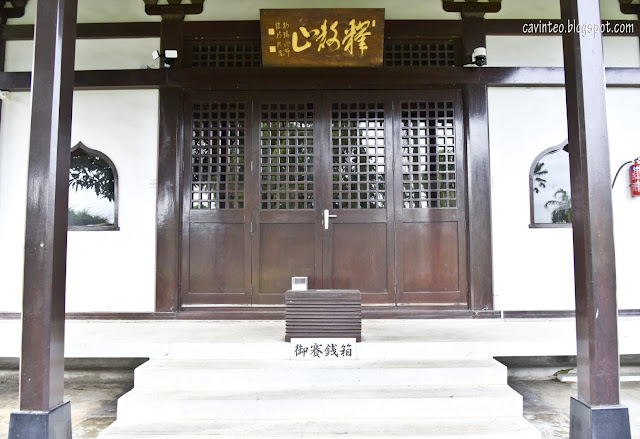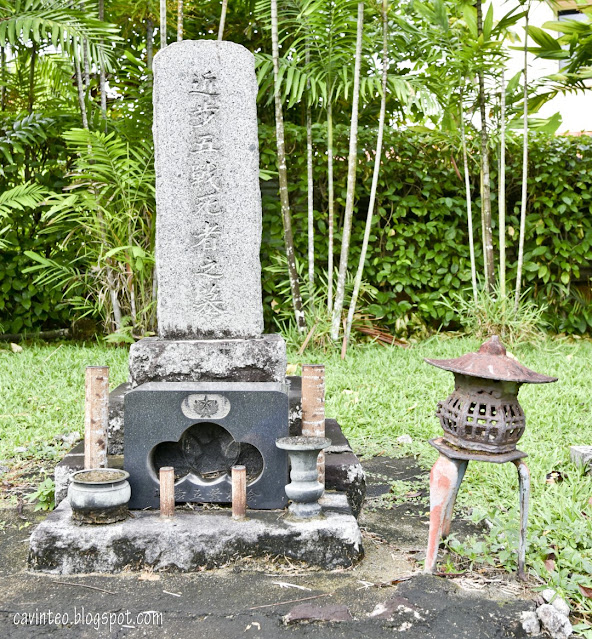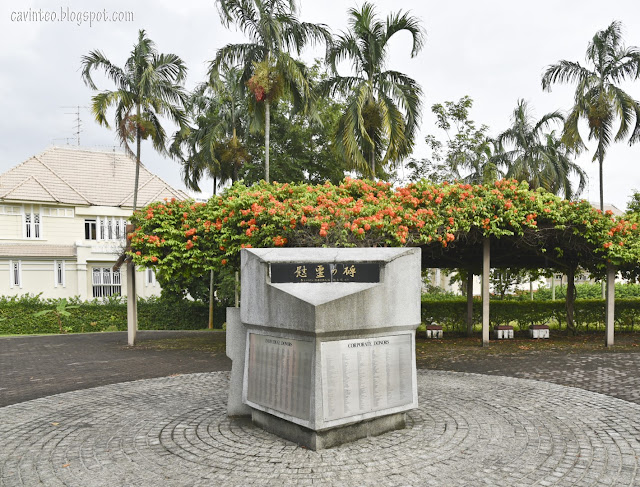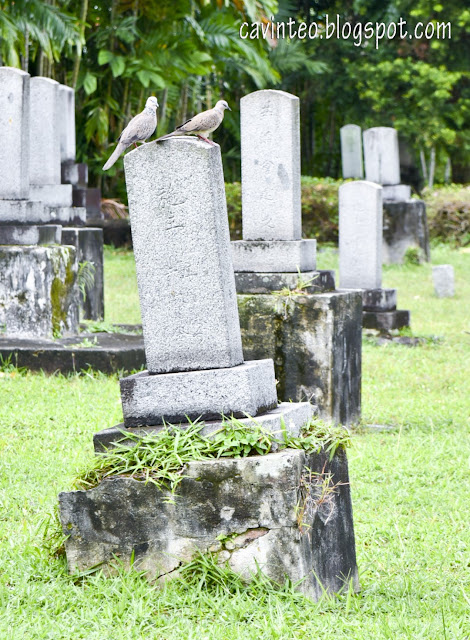Mention the word, cemetery, in Singapore and people would likely ask if you are going to lim chu kang or bukit brown. Some might have heard of a Japanese cemetery although when probed further on the location; there's a high chance you would draw a blank.
Today, I am finally going to share the pictures in this post! My apology in advance as the photographs were taken half a year ago (in December 2021); procrastination is a bitch when there are over 100 photographs.
Going there is not difficult using public transportation; take bus no 76 from Ang Mo Kio MRT station, drop at bus stop 63199 (after philips avenue) and then walk in from Philips Avenue to Chuan Hoe Avenue.
Distance from bus stop to entrance of The Japanese Cemetery Park is only about 400 meters. The only thing to pray for is "no rain" as the path in isn't sheltered.
Notice back then; closed on Sundays and public holidays. With the relaxation of safe management measures, I am unsure if the policy has changed.
"Welcoming" us to the cemetery park is the Hinomoto Jizo Guardian Deity (Chinese would know him as 地藏菩薩 or Kṣitigarbha Bodhisattva) and his little monks in front of him.
The Hinomoto Jizo Guardian Deity was erected to pray for the souls of 41 Japanese civilians who died at Jurong Camp after the war, while awaiting repatriation back to Japan.
Now, this memorial park is the "largest Japanese cemetery in Southeast Asia at 29,359 square meters, consisting of 910 tombstones that contain the remains of members of the Japanese community in Singapore" and I honestly don't know where to start, despite taking a ton of photos!
Well, best to let it be a photo post then, where pictures do most of the talking! I would still share some interesting information, based on what I found.
History of the cemetery - started in 1891 and last burial was before 1973, after the Singapore government stopped new burials, except in approved, designated areas. The cemetery park is now maintained by the Japanese Association, Singapore.
Hm.... was this remnants of an ancient wooden building?
Or a cemetery marker?
Most Chinese cemeteries would have tigers / lions as guardians for the tombs. Given the weather elements which have eroded its features, I am guessing this is supposed to be an ape.
Tombs, tombs and more tombs. There were Chinese inscriptions but they were simply names or areas they came from and I don't quite understand the Kanji references. It didn't help that my written Chinese is quite lousy.
Scratching my head on this.
Botanical memorial?
Social media influencers would purposely visit the cemetery for the metal arches that played host to the beautiful Bougainvillea flowers. During flowering season, it was way more stunning than the above.
Mido - the prayer hall. This was the third installation (first as in 1911) and although looking just like your typical Japanese temple, it's non religious in nature. Not sure what that means since the statues housed within were from Buddhism.
War Memorial for those who died in World War 2, including Japanese soldiers and war criminals; this might be sensitive in China but for Singapore, we acknowledged that war is terrible but lessons must be learnt to prevent it from happening again.
Donated stone bench; such donations were common as I remember seeing a few similar ones when I was studying in primary and secondary schools.
Tomb of a Japanese monk who came to Singapore in 1893 and passed away in 1912. Aside from teaching Buddhism to fellow Japanese, he was also active in collecting donations for the building of the first Saiyuji temple (the first installation of the mido).
An unusual Chinese tomb; it was said to house an old-time tomb keeper of the cemetery, who was Chinese, and the Japanese Association allowed him to be bury in the cemetery as gratitude for his services.
Japanese garden! According to the map, there's supposed to be a lychee tree in front of me. Let me hop over and check out the tree as I have no idea how a lychee tree looks like.
I noticed the information panel but beside it was a tree that seemed struck by lighting, with its crown missing. Is it even alive? Anyway, it was said that due to Singapore's climate, the lychee tree can't bear fruits.
In Japan, this would be used to wash your face and hand before you go into the temple. However, this isn't a temple so I am unsure of its purpose.
Resting place for Mr Takeshiro Nishimura; a doctor and author who came to Singapore in 1902 and was President of the Japanese Association in 1935, at a time when there was an anti Japanese tide.
A charnel hosting the remains of Mr Otokichi Yamamato, who migrated to Singapore in 1862 and became Singapore's first Japanese resident. His original tomb was Lim Chu Kang (then known as Choa Chu Kang cemeteries) and was moved over to the Japanese Cemetery in 2005.
More memorials for the war dead, I think. The second picture actually indicated the names of the deceased and they were exclusively from the army.
When you talk about the origins of the Japanese Cemetery in Singapore, one name will pop out. Mr Futaki Takajiro, a brothel owner, who offered his own rubber plantation as a graveyard for fellow Japanese who were unable to be buried in Japan. Fact is, there were two more founders, Shibuya Ginji and Nakagawa Kikuzo, who were also brothel owners.
Memorial Plaza - no one is buried here. It merely named those well known Japanese in Singapore. Not sure if I would remember any from that era. Maybe Tomoyuki Yamashita, who invaded Singapore back in 1942 and Mamoru Shinozaki, who wrote autobiography of his time in Singapore during World War 2.
Of course, a vending machine must be present.
Given that Japan is the land of vending machines!
Broken beam.
Bougainvillea flowers again. I visited with a friend of mine who wanted to check out the cemetery but didn't have anyone to accompany him as people, generally, are not keen in cemeteries. Obviously, I am the odd one out.
More of the tombs. Unlike Chinese / Christian tombs, the Japanese one is minimalist and simple, without heavy play on statues and colors. Nothing much that would draw my attention.
Shelters covered with vines! Give them a few hundred years and you wouldn't have recognize that there's a human made structure underneath! p.s. provided the wood didn't break.
Oldest grave for a Ms Toma Sato, who died in 1889. You may wonder how come she was buried before the start of the cemetery in 1891. It's a matter of official and unofficial; unofficially, the area was already used as a cemetery before approval was granted by the British Colonial government.
This panel explained the origins of karayuki san, a term used to refer to Japanese prostitutes'. As many died penniless, their tombs were just marked with a simple wooden gravestone that decayed as time goes by.
First one was a memorial for Futabatei Shimei, "a Russian literary scholar, translator and novelist). He was cremated in Singapore but remains were sent back to Tokyo and buried in Somei cemetery. Second one was for Kanou Ueyama, eldest son of the inventor of the mosquito coil incense.
Tomb of Field Marshal Count Hisaichi Terauchi; the highest ranking Japanese soldier at Southeast Asia when Japan surrendered during World War 2 but he never stood trial for war crimes as he died in 1946. He ever ordered that "that all Allied prisoners of war in his command area were to be massacred if Japan was invaded".
Wait, another Chinese tomb?! From the year, it appeared to be the original tomb keeper for the cemetery, who died in 1960. Then who was in the other tomb? His son?
Random photos; as expected, I got trigger happy and took way too many photographs. That explained the procrastination in posting as I would likely need to sacrifice a few hours to post.
Anyone knows what is this majestic tree? From a layman's point of view, the trunk seemed to be made up of intertwined vines. Very beautiful though.
Remains of Tomekichi Kusumoto and other navy soldiers. Special mention of Tomekichi Kusumoto as his body was buried in a Christian cemetery and was forgotten for almost 50 years before being transferred over to the Japanese cemetery in 1928.
Tomb of Yoshio Nishimura; a highly respected Japanese and once the President of the Japanese Association in 1933, he killed himself in 1934 after being accused of spying by the British Colonial government.
A unique Japanese tomb with English words.
I mentioned earlier that Japanese cemeteries don't have much statues; there were and the above was an example. I can't really make out the Chinese words.
Another one, albeit a bit scary, as head was missing.
Talking about scary, are there any ghost stories? Technically, people do feel a sense of eeriness when it comes to cemeteries, especially at night. In the daytime, it was a scene of quiet and peacefulness. For night, the cemetery is closed and you can't enter anyway. I didn't hear of any stories but Alex's friend ever shared of a haunted house along the perimeter of the cemetery.
About to exit the cemetery park!
This cute scene stopped me in my tracks though. Should this stone monk be alive, I don't think it would calmly stand there and let the lizard have its way.
=====
Address
Singapore 549854
Map
As above
As above.
As above.
Website
No Pokemon Go!





































































































No comments:
Post a Comment